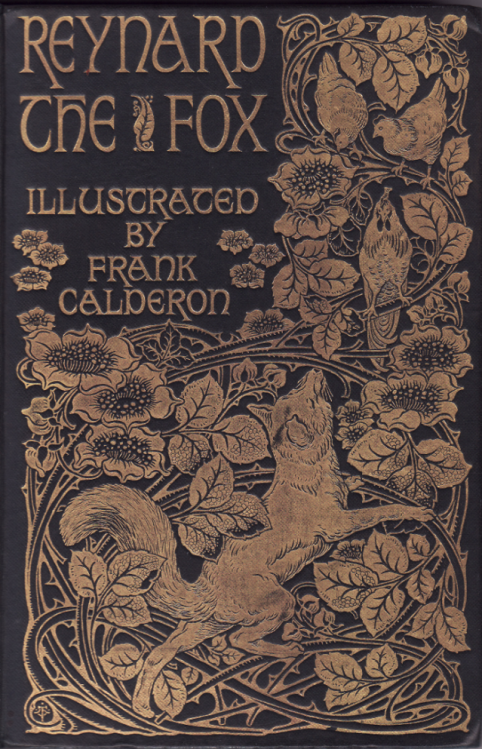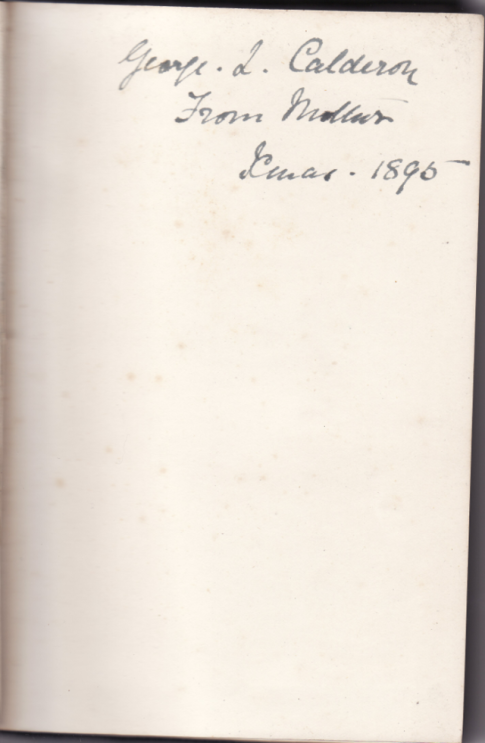I picked up The Second I Saw You: The True Love Story of Rupert Brooke and Phyllis Gardner at Waterstones recently and, as I always do with newly published Edwardiana, went straight to the index to see if ‘Calderon’ featured in it. Horrors, there were five references! What had I overlooked in my research? Letters from Calderon to Brooke? A whole story about joint attempts to get Lithuania staged in Britain? Advice from George to Rupert about Tahitian women?
At this stage in completing my biography, I must say I was relieved to discover on closer inspection that the references were to…William Francis Calderon.
Frank Calderon, born 1865, was George’s fourth elder brother and the one he saw most of in London (see my posts of 16 and 27 September 2014). He was a chip off his father Royal Academician P.H. Calderon’s block, except that he specialised in animal painting. He was a seminal force in a British school of animal painting, and his book Animal Painting and Anatomy (1936) is still highly respected and in print.
The reason he features in Lorna Beckett’s new book about Brooke is that the twenty-one-year-old Phyllis Gardner was attending the Slade School of Art and Frank Calderon’s School of Animal Painting in Baker Street when she first met Rupert Brooke. There are no references to George in it, but it is very interesting as a biography of Brooke and Gardner spanning the years 1911-15. I have bought it and intend to discuss it in July.
There are no letters from Frank Calderon in George or Kittie’s archive. Amazingly, there is also no photograph of him, when the rest of Clara Calderon’s family (apart from Henry) are pretty well illustrated. The only photograph I have ever seen of Frank Calderon is at http://en.wikipedia.org/wiki/William_Frank_Calderon and it looks to me as though it could actually be of his father.
However, there is an early example of Frank Calderon’s work in the remnants of George’s library, and that is the book The Most Delectable History of Reynard the Fox, edited with Introduction and Notes by Joseph Jacobs (Macmillan, 1895), which was designed and illustrated by him:

Cover

Frontispiece

Inscription by Clara Calderon
This is certainly a beautiful book, and P.H. Calderon was very proud of his son’s work. As we see from the last image above, it was given to George as a present from his mother at Christmas, 1895. There may seem nothing remarkable about that, but George was in Russia at the time and when it arrived he had to spend a day languishing at St Petersburg’s Custom House before they would yield it up (see his account in Pall Mall Gazette 20 February 1896). So this particular copy has been to Russia and back!
Frank and Ethel Calderon (née Armstead) were the parents of Philip Hugh Calderon (b. 1893) and Joan Calderon (b. 1896), who as children performed in the famous Christmas pantomimes that George got up at Heathland Lodge. As a young sea cadet, Philip saw George off at Tilbury for Tahiti in April 1906, in the company of his father and William Rothenstein. Philip was the father of the French wildlife film-maker Gérald Calderon (1926-2014), whose biography has recently appeared on Wikipedia.
Next entry: 3 May 1915
Related























Another eminent Calderon
I picked up The Second I Saw You: The True Love Story of Rupert Brooke and Phyllis Gardner at Waterstones recently and, as I always do with newly published Edwardiana, went straight to the index to see if ‘Calderon’ featured in it. Horrors, there were five references! What had I overlooked in my research? Letters from Calderon to Brooke? A whole story about joint attempts to get Lithuania staged in Britain? Advice from George to Rupert about Tahitian women?
At this stage in completing my biography, I must say I was relieved to discover on closer inspection that the references were to…William Francis Calderon.
Frank Calderon, born 1865, was George’s fourth elder brother and the one he saw most of in London (see my posts of 16 and 27 September 2014). He was a chip off his father Royal Academician P.H. Calderon’s block, except that he specialised in animal painting. He was a seminal force in a British school of animal painting, and his book Animal Painting and Anatomy (1936) is still highly respected and in print.
The reason he features in Lorna Beckett’s new book about Brooke is that the twenty-one-year-old Phyllis Gardner was attending the Slade School of Art and Frank Calderon’s School of Animal Painting in Baker Street when she first met Rupert Brooke. There are no references to George in it, but it is very interesting as a biography of Brooke and Gardner spanning the years 1911-15. I have bought it and intend to discuss it in July.
There are no letters from Frank Calderon in George or Kittie’s archive. Amazingly, there is also no photograph of him, when the rest of Clara Calderon’s family (apart from Henry) are pretty well illustrated. The only photograph I have ever seen of Frank Calderon is at http://en.wikipedia.org/wiki/William_Frank_Calderon and it looks to me as though it could actually be of his father.
However, there is an early example of Frank Calderon’s work in the remnants of George’s library, and that is the book The Most Delectable History of Reynard the Fox, edited with Introduction and Notes by Joseph Jacobs (Macmillan, 1895), which was designed and illustrated by him:
Cover
Frontispiece
Inscription by Clara Calderon
This is certainly a beautiful book, and P.H. Calderon was very proud of his son’s work. As we see from the last image above, it was given to George as a present from his mother at Christmas, 1895. There may seem nothing remarkable about that, but George was in Russia at the time and when it arrived he had to spend a day languishing at St Petersburg’s Custom House before they would yield it up (see his account in Pall Mall Gazette 20 February 1896). So this particular copy has been to Russia and back!
Frank and Ethel Calderon (née Armstead) were the parents of Philip Hugh Calderon (b. 1893) and Joan Calderon (b. 1896), who as children performed in the famous Christmas pantomimes that George got up at Heathland Lodge. As a young sea cadet, Philip saw George off at Tilbury for Tahiti in April 1906, in the company of his father and William Rothenstein. Philip was the father of the French wildlife film-maker Gérald Calderon (1926-2014), whose biography has recently appeared on Wikipedia.
Next entry: 3 May 1915
Share this:
Related